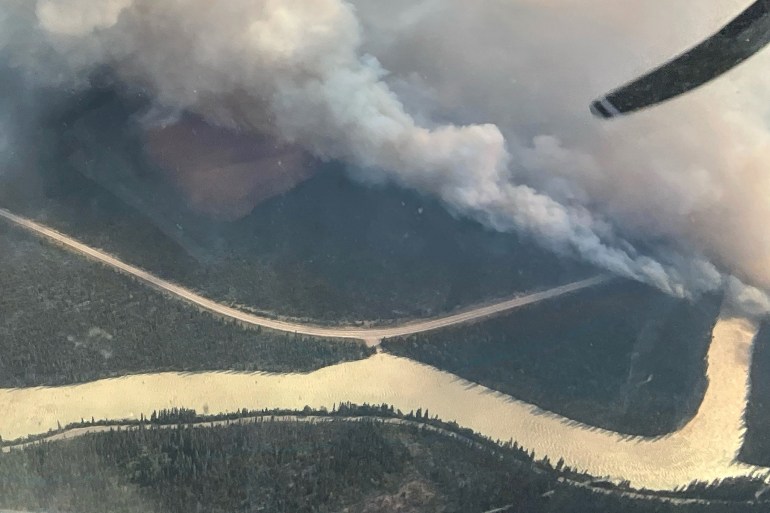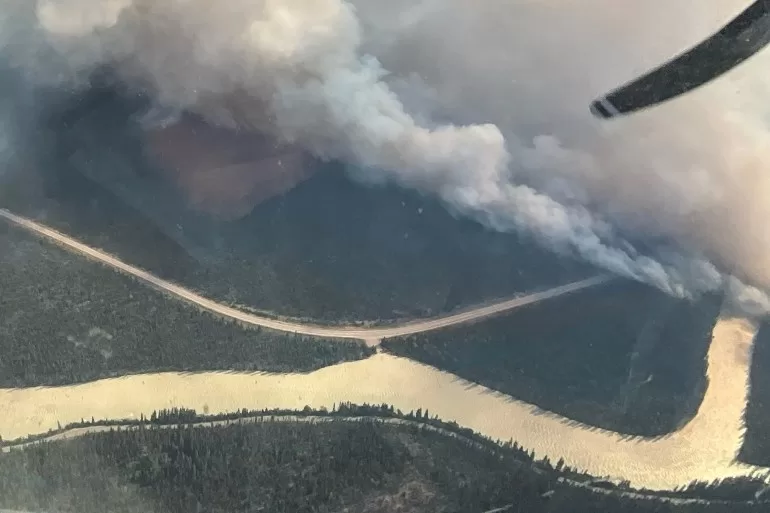Town council of Jasper says about 32 percent of structures in the town had been destroyed in the blaze.
A wildfire that destroyed about a third of the western Canadian town of Jasper is still out of control but rain and cooler conditions are helping firefighters, authorities said.
The town of Jasper is in Alberta’s mountainous Jasper National Park, a major tourist attraction. The town and park, which draw more than two million tourists a year, were evacuated on Monday.
“Rain and cooler temperatures and the incredibly hard work of firefighters have resulted in fire activity that is significantly subdued,” said Alberta Premier Danielle Smith on Friday.
Smith told reporters it is “important to note that the fire is still out of control”.
“It remains unsafe for people to return,” she said.
As of late Thursday, the Jasper “wildfire complex”, which encompasses three separate fires, was estimated to be 36,000 hectares (about 89,000 acres), according to park officials. However, they cautioned that mapping the complex was difficult due to strong winds and “extreme fire behaviour”.
Meanwhile, the town council of Jasper said at least 358 of the 1,113 structures within the town – about 32 percent – had been destroyed.
⚠️ Jasper Wildfire Complex Update: Current as of July 26 12:40 pm ⚠️ pic.twitter.com/LSIJrH8oE7
— Jasper National Park, Parks Canada (@JasperNP) July 26, 2024
Officials have estimated about 10,000 people were in the town of Jasper and 15,000 visitors were inside the national park when an evacuation was ordered on Monday.
David Leoni, one of the thousands of people evacuated, said his family had lost their home of 10 years.
“Even a day and a half on from that I’m still feeling very shocked,” he told Canada’s CTV television.
“I will gladly go back in to see what remains … for me, psychologically, it’s – I think it’s good to have some closure and to see for myself what it’s like.”
Ravages of Climate Crisis
The fire in the iconic national park, located about 370km (230 miles) west of the provincial capital, Edmonton, has drawn attention to the devastating wildfire season that has come to define the summer months in North America.
The blaze was one of hundreds burning in western Canada, propelled by a heatwave and an increase in lightning strikes. At least 166 fires were active in Alberta as of Friday, according to a government tracker.
Scientists say the global climate crisis has extended the North American wildfire season, with warmer temperatures creating drier conditions that allow fires to quickly spread. Climate change has also been blamed for an increase in the frequency of lightning strikes.

Canada saw its most intense fire season on record in 2023, with more than 6,600 wildfires burning 15 million hectares (about 37 million acres) across the country, an area roughly seven times the annual average.
South of Canada’s border, firefighters were also battling a swath of blazes in the western United States, with more than 110 active fires covering 7,250 square kilometres (2,800 square miles) burning as of Friday.
Those included the Park Fire in California, which had destroyed more than 130 structures after sparking on Wednesday. The blaze, currently the largest in the state, had started after a man pushed a burning car into a gully in the northern city of Chico, authorities said.
In Oregon, a search and rescue team confirmed that a tanker plane crash killed a firefighting pilot in Oregon. The plane had disappeared Thursday while battling the Falls Fire in the eastern flank of the state.
The largest active fire in the US has also been burning in the state, with the Durkee Fire scorching nearly 1,630 square kilometres (630 square miles) as of Friday.
